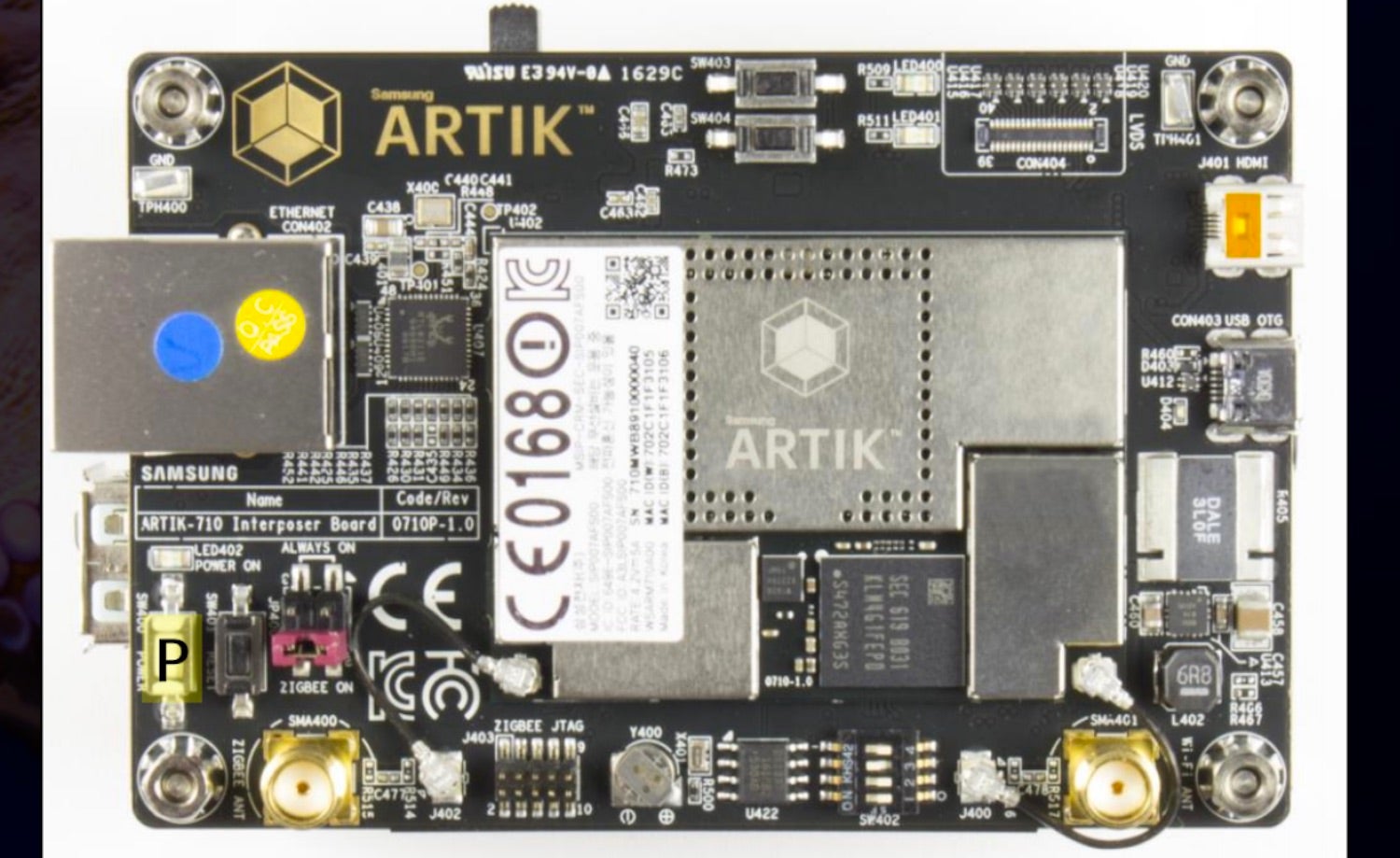The Linux Foundation’s EdgeX Foundry project for developing open source edge computing middleware has released its first developer kit. The Ubuntu-based kit is built around an octa-core Samsung Artik 710 Starter Kit teamed with a GrovePi+ I/O board. Future kits will include an Artik 530 kit, and eventually, a Raspberry Pi/GrovePi+ combination.
At the recent IoT Solutions World Congress, the EdgeX Foundry project also announced nine new members, including Intel, and debuted a Smart Building Automation Use Case Community Demo. The demo showed off the platform’s ability to bring together heterogeneous solution components, including different vendors, connectivity standards, operating systems, and hardware types.
EdgeX Foundry was announced in 2017, with a goal of developing a standardized, open source interoperability framework for IoT edge computing. In August, the project released a v2 ”California” version of the middleware, which will be succeeded by a “Delhi” release in November. Delhi will provide EdgeX’s first management features, as well as improved security features such as access control and security bootstrapping. It will also offer C and Golang-based Device Service SDKs and a reference GUI.
Based largely on technology created by Dell, EdgeX Foundry is creating and certifying an ecosystem of interoperable, plug-and-play components to create an open source EdgeX stack for IoT edge computing. The cross-platform middleware will mediate between multiple sensor network messaging protocols as well as multiple cloud and analytics platforms.
Dell is one of three Platinum members alongside Analog Devices and Samsung. With the new additions, the membership has reached 70. The new members are Basking Automation, Beijing University of Posts and Telecommunications (BUPT), DATA AHEAD, CertusNet, Intel Corp., Redis Labs, the Federal University of Campina Grande (UFCG) /Embedded Lab, Windmill Enterprise, and ZEDEDA. Previous members include AMD, Canonical, Cloud Foundry, Linaro, Mocana, NetFoundry, and VMware.
EdgeX developer kits
The Artik 710 based EdgeX developer kit is initially available as a community-supported product. Developers independently purchase the kit from Samsung and download the upcoming EdgeX Delhi software from the EdgeX repository on GitHub. Informal, community-based tech support is available via forums like the EdgeX Rocket Chat.
This initial kit, as well as future kits, will also soon be available as part of a commercial track that offers professional support. The commercial kits are designed primarily for EdgeX members but are available to anyone. Commercial options will include “kits based on supported versions of the EdgeX framework itself (neutral to any plug-in value add), kits based on specific IoT platforms, and microservice plug-ins for value-add such as analytics, data orchestration and security,” says the project.
Samsung’s Artik 710 and Artik 530, which will form the basis of an upcoming EdgeX kit, switched their BSPs from Fedora to Ubuntu in Oct. 2017. The Artik 710 module features a 1.4GHz, octa-core, -A53 SoC with a Mali T400 GPU while the Artik 530 has a 1.2GHz, quad-core, -A9 SoC. Both include hardware security elements.
The 49x36mm modules integrate 1GB DDR3 RAM, 4GB eMMC flash, and an Ethernet PHY. They also include dual-band 802.11a/b/g/n (WiFi 4), Bluetooth 4.2, and Zigbee/Thread (802.15.4).
The Artik 710 Developer Kit is a double board set. The Interposer Board provides the Artik 710 plus Gigabit Ethernet, micro-HDMI, and micro-USB OTG ports. There’s also an LVDS interface and antenna connectors. The Platform Board sits under the Interposer board and provides a USB 2.0 host port, SD slot, audio jack, JTAG, 5V DC input, and MIPI-CSI and -DSI connections.
The EdgeX version of the Artik 710 kit also includes the optional Artik Interface II Board, which connects the bundled Seeed GrovePi+ I/O board. The GrovePi+ Starter Kit also provides a dozen Grove sensors and LEDs, plus a backlit LCD, buzzer, relay, and button.
The GrovePi+ Starter Kit is also part of Samsung’s GrovePi+ Starter Kit for Eagleye 530 board, which will form the basis of the upcoming Artik 530 kit. Unlike the Artik 710 kit, the Artik 530 equipped Eagleye 530 is a single board with a Raspberry Pi like layout, footprint, and 40-pin GPIO interface. The Eagleye 530 is further equipped with GbE and HDMI ports, 2x USB 2.0 ports, and micro-USB OTG and power ports. There’s also an SD slot, audio jack, and MIPI-CSI camera interface. Unlike the Artik 710 kit, the Eagleye 530 does not require the Interface II Board to hook up the bundled GrovePi+ board.
The GrovePi+ board will also be available in a future EdgeX kit that runs on the GrovePi+ Starter Kit for Raspberry Pi. Other development kits are also under consideration. Even if Intel had not joined the project, one of them was likely to provide an x86 chip.
“Intel’s involvement in EdgeX Foundry will help drive scale and accessibility of solutions for both our customers and businesses of all sizes,” stated Stacey Shulman, Intel’s chief innovation officer for Retail Solutions.




